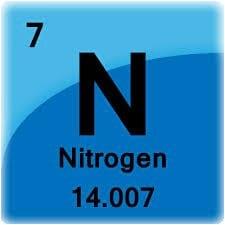Amino Acids: Looking beyond Protein Levels for Animal Performance

In relation to the opinion expressed by the member that preceded me, it is propitious to clarify that in Peru, country in process of a solid industrialization in South America; and with the largest biodiversity on the planet (sum of the variety of flora, fauna and marine biomass), if the importance of the Aa is fully understood. in its entire context, where, at the level of the analytical tests carried out by prestigious companies based in Peru, it is clearly understood that the analyzes are clearly directed to the characterization and calculation of protein concentration, to fix the coefficient of extinction (EC), determination of total Aa, without exclusion of the triad: cysteine, tryptophan and hydroxyproline; as well as free Aa, where asparagine and glutamine are considered. I conclude by mentioning that in the neighbors of the hemisphere, vaguely called Third World, they also have clear discernment and focus on the Aa. Greetings.
It is unquestionable that the level of crude protein and/or digestible protein is not sufficient according to the requirement of the mono or polygastric species. In fact, within the essentiality of Aa, whose concept is relative by the interaction between them and other molecules, the technical article commits us to deal with the term; Assertive Management of Aa, so we can not fail to take into account Aa hepatoprotectors, because the liver is an essential axis within the animal metabolism and because it is linked in the animal immune system. In this context, eg. the carnitine, to which I will make particular reference, is an amino acid synthesized from the lysine and methionine, mainly at the level of the liver and kidneys. being a very important lipotropic factor.
L-carnitine has indispensable functions in the intermediate metabolism and is received by endogenous synthesis and exogenous sources. It plays a role in the metabolism of fatty acids by directing them into the mitochondrial oxidative pathway through the action of specialized acyltransferases. In poultry production, L-carnitine has been shown to have a multifunctional purpose, which includes: promotion of growth, strengthening of the immune system, antioxidant effects and enhancement of broiler semen quality. In another study, L- supplemental carnitine increased body weight gain (BWG) and improved feed conversion (HR) during the first 2 weeks of study. FC was also improved during the fourth week of the experiment.
In a study in pigs, it was concluded that the stimulating effect of carnitine on the growth of the litters may be due to a better lactation behavior of the piglets born of L-carnitine, which causes that the milk production of the bristles increases. That is, dietary supplementation of l-carnitine increases the reproductive performance of the bristles. These findings suggest that endogenous L-carnitine synthesis is insufficient to meet the metabolic requirement of sows during gestation. Finally, through pet studies, it is recommended to incorporate L-carnitine in the hypocaloric diets of the obese dog because it modifies its body composition, allows to accentuate the loss of weight and stimulates the degradation of fat mass favoring the increase of muscle mass ( Gross and Zicker, 2000). Regards.
It is true that beyond the protein level we need more information on the levels of amino acids, however, the prevailing major limitation, especially to developing countries is not understanding the value of amino acids, but, availability and accessibility of analytical equipment and associated chemicals (if any) for amino acids.



.jpg&w=3840&q=75)






.jpg&w=3840&q=75)